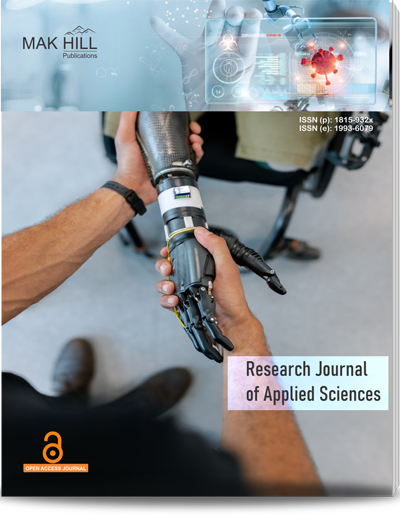
Research Journal of Applied Sciences
ISSN: Online 1993-6079ISSN: Print 1815-932x
107
Views
1
Downloads
Prediction of Coping Styles and Happiness Based on the Maladaptive Schemas in Clients of Aid Committee in Urmia, Iran
Ahmad Esmali, Kobra Ghanizadeh Balderlou, Masoumeh Alizadeh, Nezam Zeinali and Roghayeh Hossein Gholizadeh
Page: 144-153 | Received 21 Sep 2022, Published online: 21 Sep 2022
Full Text Reference XML File PDF File
Abstract
The aim of the current study was predicting happiness and coping styles based on maladaptive schemas in clients of Urmia aid committee. The population of the current study included all clients whom admitted to aid committee during 2015. Because accurate statistics of clients was not available, so the convenience sampling method was used for determining sample and among all of them, 120 person were selected as a sample. Analysis of Variance (ANOVA) and Pearson correlation test have been used to investigate hypothesis. The Billings and Moos coping strategies questionnaire, Oxford Happiness Questionnaire and Young Schema Questionnaire-Short Form (YSQ-SF) were used to collect data. Based on the results and model obtained from regression analysis, it can be concluded that the predictor variables (rejection/disconnection, impaired autonomy and performance, impaired limits, other-directedness and over-vigilance/inhibition) explained 21% of variance of criterion variable (early schemas). In other words, all predictor variables had a significant impact on the criterion variable (coping styles) (p<0.05). In studying the relationship between early schemas and copying styles, the results showed that the correlation coefficient between early schemas and happiness (0.453) was significant at p<0.01 level.
How to cite this article:
Ahmad Esmali, Kobra Ghanizadeh Balderlou, Masoumeh Alizadeh, Nezam Zeinali and Roghayeh Hossein Gholizadeh. Prediction of Coping Styles and Happiness Based on the Maladaptive Schemas in Clients of Aid Committee in Urmia, Iran.
DOI: https://doi.org/10.36478/rjasci.2016.144.153
URL: https://www.makhillpublications.co/view-article/1815-932x/rjasci.2016.144.153